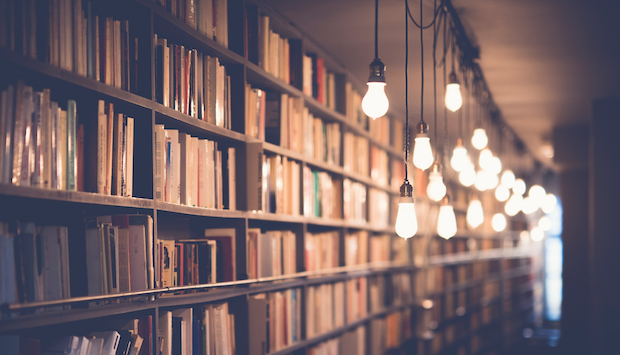Today’s guest post is by Isaiah Hoogendyk, language editor for the content innovation department.
True knowledge is [that which consists in] the doctrine of the apostles, and the ancient constitution of the Church throughout all the world, and the distinctive manifestation of the body of Christ according to the successions of the bishops, by which they have handed down that Church which exists in every place, and has come even unto us, being guarded and preserved without any forging of Scriptures, by a very complete system of doctrine . . . And [it consists in] reading [the word of God] without falsification, and a lawful and diligent exposition in harmony with the Scriptures.
– St. Irenaeus, Against Heresies, Book IV, 33:8 (in Ante-Nicene Fathers,
vol. I, 508)
The sacred Scriptures are God’s Word to His people, in which the Bride of Christ “constantly finds her nourishment and her strength.” We understand Holy Tradition and the Magisterium to be those authorities that explain the Scriptures so that we might read “without falsification.” But how are we to learn the broader context of the “doctrine of the apostles” and the “ancient constitution of the Church,” such as St. Irenaeus himself did over 1800 years ago? And what about this “distinctive manifestation,” which is somehow, perhaps miraculously, a “very complete system of doctrine”? How are we, as twenty-first-century Christians, to gain a richer, more complete perspective of the early Christian era and the inspired apostolic writings and Tradition, which have safeguarded Christ’s very Teachings throughout the centuries?

Outside of the canonical Scriptures, the writings collectively called the “Apostolic Fathers” are perhaps the most important documents in the first two centuries of the Church, as they provide crucial historical context for the Scriptures and evidence of a living Tradition. Because many of the authors knew some of the first Apostles personally, “their writings may be held as echoes of genuine Apostolic teaching.” Indeed, some of the texts were considered canonical by certain early Church Fathers.
Typically included among the Apostolic Fathers are:
o The First and Second Epistles to the Corinthians by St. Clement, the first written at the end of the first century (the authorship and date of the second being disputed). It is in these writings that we see some of the earliest evidence for the See of Peter’s authoritative role in speaking on important theological matters. St. Irenaeus, the prolific theologian and student of the martyr Polycarp, counted St. Clement’s first epistle among Holy Scripture.
o The Epistles of St. Ignatius, written to the Ephesians, Magnesians, Trallians, Romans, Philadelphians, Smyrnaeans and to Polycarp. It was St. Ignatius’ bold statement that summed up so poetically the plight and joy of the early martyrs: “I am God’s wheat, and I am ground by the teeth of wild beasts that I may be found pure bread of Christ.”
 o The Epistle of St. Polycarp to the Philippians, and the Martyrdom of Polycarp, which includes yet another inspirational witness for martyrdom, where St. Polycarp’s fiery death was said to be “not like flesh burning but like bread baking or like gold and silver being refined in a furnace.”
o The Epistle of St. Polycarp to the Philippians, and the Martyrdom of Polycarp, which includes yet another inspirational witness for martyrdom, where St. Polycarp’s fiery death was said to be “not like flesh burning but like bread baking or like gold and silver being refined in a furnace.”
o The Didache, or Teaching of the Twelve Apostles: regarded as inspired by the great scholar Origen, the Didache essentially reads like a Christian initiation manual, making it one of the earliest extant Catechetical texts.
o The Epistle of Barnabas, which, though probably not written by St. Paul’s first missionary companion, was nonetheless of sufficient authority to be included in the earliest Greek volume of the Scriptures, the Codex Sinaiticus (needless to say, it did not make the final canonical cut).
o The Shepherd of Hermas, which is the lengthiest text in this collection and also of an apocalyptic nature. The Catholic Encyclopedia states that St. Athanasius, defender of the Trinity and enemy of the Arians, “speaks of it, together with the Didache . . . as uncanonical yet recommended by the ancients for the reading of catechumens.” Origen identifies the author with the Hermes mentioned in Romans 16:14.
o The Epistle to Diognetus: this short, anonymous work (written by Mathetes, or “Disciple,”) to the otherwise unknown “Diognetus” is an excellent early example of Christian apologetic writing. It was specifically penned in consideration of the early Christians’ interaction with pagan idol worshipers and those of the Jewish faith.
Greek: The Language of the Early Church
For studies in the history of the Church and Her Tradition, the English translations of the Apostolic Fathers are requisite. But it would be careless to neglect the importance of the original Greek in understanding the language of the New Testament. Because many of the writings are essentially contemporary with St. John’s later writings, the way the Greek was used in each informs the others. As Rick Brannan, Logos’ resident Apostolic Fathers enthusiast and scholar, says, “In the scope of extant material in Greek, the New Testament is relatively small. Things that seem unique, out of place or unexpected in the New Testament suddenly become easier to explain amongst a wider linguistic milieu.”
This “wider linguistic milieu” would also include the Septuagint (or, the Greek translation of the Old Testament, which was the Scripture of the early Church until the New Testament canon was determined), Greek intertestamental writings (collectively called the Pseudepigrapha), and the vast writings of Josephus and Philo, which all aid in exegeting the nuances of Koine (or “biblical”) Greek. But of no less importance in biblical Greek studies are the writings of the Apostles’ successors, who shared not just the language, but also the theology and Tradition of the newly established Church.
If you own Logos’ Catholic Scholar’s Library, then you already have the English and morphologically tagged Greek texts of Lake, Lightfoot, and Holmes (including the reverse interlinear of Lake’s English translation). This means you can get started today on Greek Word Studies comparing the Fathers to the New Testament writings. If not, you can upgrade to get these excellent and essential resources. Otherwise, the best single resource to get is Rick Brannan’s The Apostolic Fathers Greek-English Interlinear. (English translations are found in the first volume of Schaff’s Ante-Nicene Fathers, which is included with all Catholic base packages.)






[…] couple weeks ago, I wrote about a great way to expand your understanding of the Church’s early apostolic witness. By […]
The collection of Anti-Nicene, Nicene, and Post-Nicene Catholic edition contains English translations of these authors, too.
Indeed: the Apostolic Fathers included in Lake, Lightfoot and Holmes (including Fragments of Papias, which was not mentioned in this post), are all found in the first volume of the Ante-Nicene Fathers, which is included with all the Catholic base packages. That first volume also includes Justin Martyr and Irenaeus, which are excellent early Church Fathers that provide even more context for the early Apostolic voice.